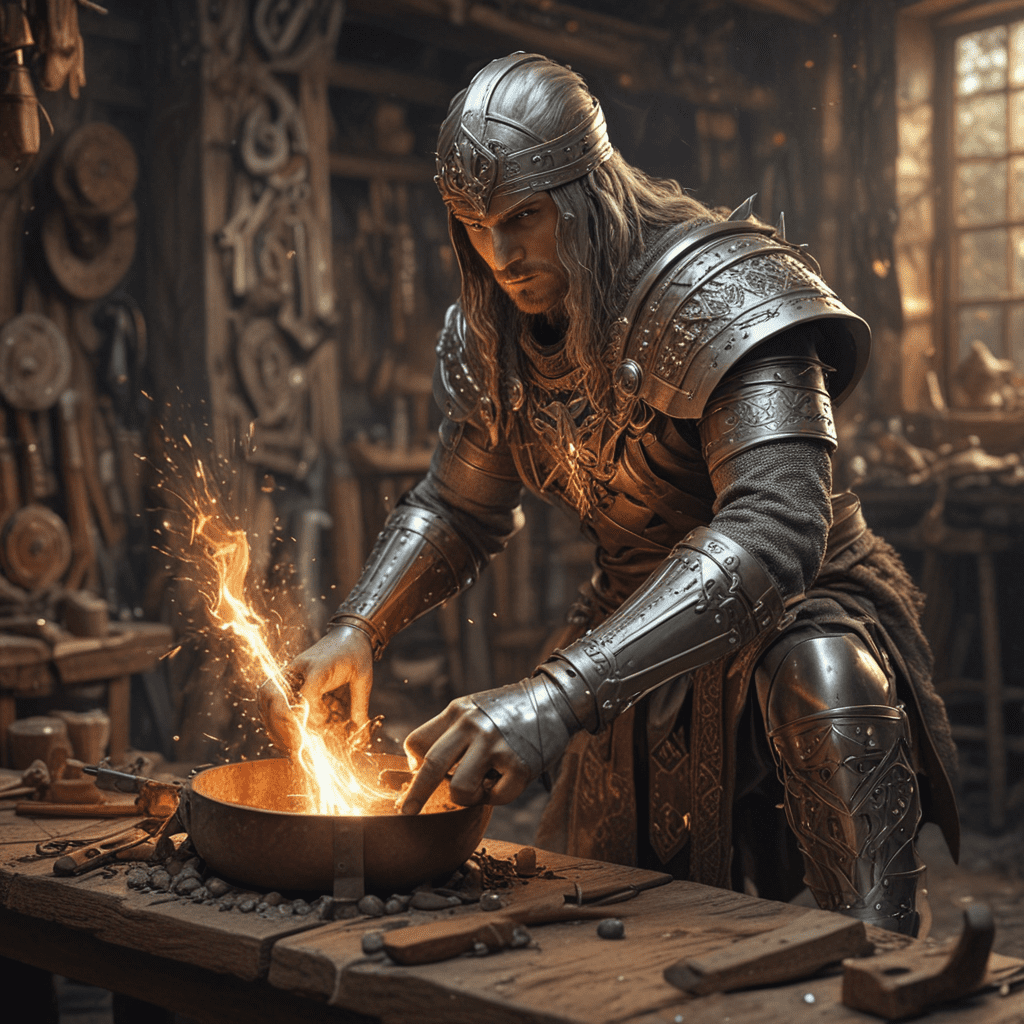Slavic Mythology: The Art of Metalworking and Smithing
Slavic mythology refers to the beliefs and stories of the Slavic peoples, an Indo-European group that originated in Eastern Europe. In Slavic culture, metalworking held a significant position, with skilled artisans creating essential tools, weapons, and adornments.
The Origins of Slavic Metalworking
Archaeological evidence suggests that Slavic metalworking practices emerged during the Iron Age, influenced by neighboring cultures such as the Scythians and Greeks. Early metalworkers utilized iron and bronze, crafting objects such as weapons, tools, and ornaments. Over time, they developed innovative techniques and mastered the use of various metals.
The Gods of Metalworking
Slavic mythology is rich in deities associated with metalworking and the creation of metal. Svarog, the supreme god, is often depicted as the patron of fire, blacksmithing, and metallurgy. Veles, the god of the underworld and livestock, is also linked to metalworking, as his symbol, the aurochs, was believed to possess a connection to iron. Kukhta, a lesser-known deity, is specifically revered as the god of blacksmiths, symbolizing the skill and expertise required in the craft.
The Creation of Metal
Slavic mythology offers fascinating accounts of the origin and creation of metal. One legend tells of how Svarog, with the help of other gods, descended to the underworld to forge the first metals from celestial ore. The process is often described as a sacred and transformative act, imbuing metal with strength, beauty, and magical properties.
Blacksmiths in Slavic Society
Blacksmiths played a crucial role in Slavic communities, serving as skilled artisans who crafted essential items. They commanded respect and admiration for their mastery of fire, metal, and tools. Their workshops were often centers of activity and knowledge, where apprentices learned the intricate techniques of metalworking.
6. Metalworking Techniques
Slavic metalworkers employed a range of techniques to shape and refine metals. Forging, the process of heating metal and hammering it into desired forms, was widely used for crafting tools and weapons. Casting, involving pouring molten metal into molds, allowed for the production of intricate objects such as jewelry and ceremonial pieces. Welding, the joining of metal pieces through heat and pressure, enabled the creation of complex structures like armor and shields.
7. Artistic Expression in Metalworking
Slavic metalworking transcended mere functionality, becoming a medium for artistic expression. Craftsmen adorned objects with intricate decorative motifs, often inspired by nature and mythology. Symbols of fertility, protection, and divine favor were commonly incorporated into designs. Metalworking also played a significant role in creating jewelry, with elaborate necklaces, bracelets, and earrings showcasing the skill and artistry of Slavic craftsmen.
8. Metalworking in Folklore and Literature
Slavic folklore and literature are replete with tales and legends featuring blacksmiths. In the epic poem "The Tale of Igor's Campaign," the legendary blacksmith Buslai is renowned for his exceptional skill and the magical properties of his creations. Other stories depict blacksmiths as cunning tricksters, using their abilities to outwit their opponents or forge magical objects that bestow extraordinary powers.
9. The Legacy of Slavic Metalworking
The legacy of Slavic metalworking extends beyond its own time and culture. Slavic metalworking techniques and designs influenced later European metalworking traditions, contributing to the development of medieval and Renaissance craftsmanship. Archaeological evidence uncovered across Europe attests to the widespread dissemination of Slavic metalworking skills, showcasing the ingenuity and artistry of Slavic artisans.
10. Conclusion
The art of metalworking held profound significance in Slavic mythology, shaping both practical and cultural aspects of Slavic life. From the divine origins of metal to the skilled craftsmanship of blacksmiths, metalworking was deeply ingrained in Slavic beliefs and practices. Its influence can still be seen today in the legacy of Slavic metalworking techniques and the enduring artistic traditions inspired by this ancient craft.
Frequently Asked Questions
1. What was the most important metal for Slavic metalworkers?
Iron was the most widely used metal for Slavic metalworkers, due to its strength, versatility, and abundance.
2. Who was the Slavic god associated with metalworking?
Svarog, the supreme god, was the patron of fire, blacksmithing, and metallurgy in Slavic mythology.
3. What were some of the decorative motifs used in Slavic metalworking?
Slavic metalworkers often incorporated symbols of fertility, protection, and divine favor into their designs, drawing inspiration from nature and mythology.
4. How did Slavic metalworking influence other European cultures?
Slavic metalworking techniques and designs spread throughout Europe, contributing to the development of medieval and Renaissance craftsmanship.
5. Are there any surviving examples of Slavic metalworking?
Archaeological excavations have uncovered numerous artifacts from Slavic metalworking, including tools, weapons, jewelry, and decorative objects, which showcase the skill and artistry of Slavic craftsmen.



